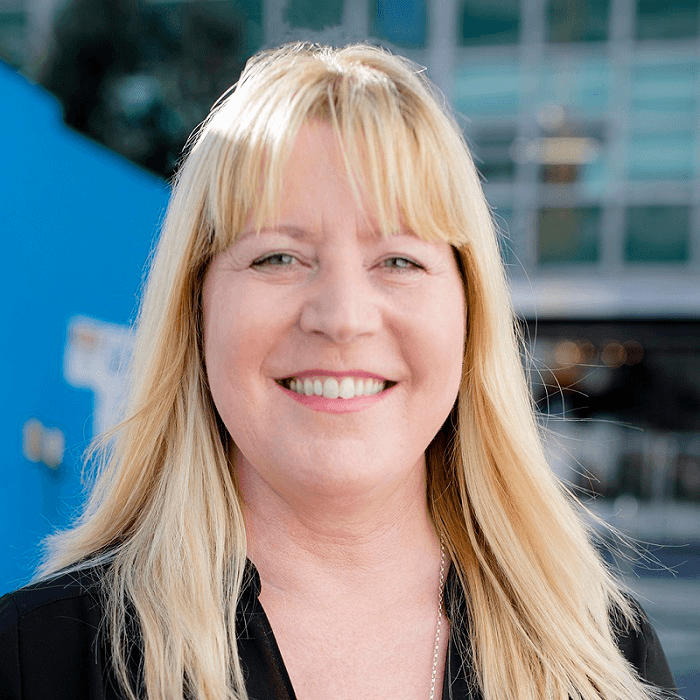Different scams are dealt with by different agencies, leaving many consumers confused as to where to go. The Commission for Financial Capability’s Bronwyn Groot says it’s time to centralise how we report scams in New Zealand.
News this week that the money lost through online scams had ballooned to $33 million in 2018 – triple the amount lost the year before – only confirmed for us here at CFFC that something needs to change in how New Zealand fights this form of crime.
The Netsafe report also revealed that 13,000 instances of online scams and fraud were reported last year, up from 8,100 cases totalling $10.1 million in losses in 2017.
That’s 13,000 people, and 13,000 families still suffering the long-lasting effects of having their hard-earned money – sometimes their life savings – stolen from them. Fraud is not just about financial loss. It takes an emotional toll that affects a person’s psychological wellbeing for months and sometimes years afterwards.
Unfortunately, all of the agencies working in fraud prevention know these numbers are just the tip of the iceberg. Most scams go unreported partly because victims are embarrassed, but also because they don’t know where to turn, and if they do find someone to report to, they come away disillusioned. Our research shows a vast number of people don’t bother reporting scams because they think nothing can be done.
And therein lies the problem – the system is fractured with a number of agencies covering different types of fraud and few providing support for victims. There’s Netsafe for online scams, CERT (the Cyber Emergency Response Team) for cybersecurity fraud such as ‘sextortion’, blackmail, phishing and malware, and the FMA (Financial Markets Authority) for investment scams. The Department of Internal Affairs for spam and until recently, postal scams, ID Care for identity theft, telephone companies for phone scams, the police, and for general information, Consumer Protection, Scamwatch and us.
Each organisation does a fantastic job in its respective area, but consumers are confused. If they do approach an agency and it’s the wrong one, they are passed on and must go through the trauma of explaining the crime they’ve suffered over and over again, often with little result. It’s no wonder they give up.
Investigation of this form of crime stops before it starts, and victims feel isolated as they sink into a mire of shame and self-recrimination that can lead to depression, marriage break-ups and, at worst, suicide.
If New Zealanders knew there was one central agency that could help them, we would know how big this problem really is. A central point could provide a rapid response to reports, triage cases to teams expert in different types of fraud who know the buttons to push to stop money being lost, start tracking offenders, put preventative measures in place to stop victims being targeted again, and support them through recovery.
The agency could also co-ordinate alerts to the public warning them of the latest scams because, like viruses, they morph and multiply by the month. Scams are not run by a single person sitting in a dark room: they are sophisticated international businesses employing thousands of people and using the latest technology to stay one step ahead of enforcement. Millions of dollars are siphoned out of the New Zealand economy every year and into organised crime – guns, drugs, human trafficking – and into the lifestyles of those who run it.
A woman I worked with recently knew none of this. Mary lost $68,000 through an investment scam – she’d been cold-called by someone offering her shares in a company that didn’t exist. She was led through a maze of fake websites, fake documents and was convinced to transfer multiple payments to various overseas bank accounts before her family got wind of what was going on and took her to report it to the police. The police said there was nothing they could do and suggested she contact the FMA. The FMA took Mary’s report and referred her to me.
I’ve worked with Mary and her family to show them how the scam operated and support them as they come to terms with the loss. Sometimes I can help people contact enforcement in the country in which their money has disappeared to put a stop on bank accounts and try to track offenders, but success is rare. Scammers move money quickly between accounts and countries, change contact names and company names, and stay several steps ahead of us.
The latest statistics show we’re losing the fight against scammers. We need to get as smart as they are, move as quickly as they do, while also wrapping a security blanket around the victims. I believe, like my counterpart at Netsafe, Martin Cocker, that this can best be done by pooling our resources and expertise into a central scam agency. Several of the agencies mentioned above could be developed into a national response centre; CFFC would support them with our work in mapping individual scams, supporting victims and public education. We just need the political will to bring us together.
It’s been done overseas. The Canadian Anti-Fraud Centre is an example of the one-stop shop that could work here. We could start small, grow the agency gradually as we get processes in place; we’d have no problem sourcing demand.
Then, the next time a friend or relative is scammed, or you fall victim (because it’s not a case of if, but when), you will know exactly where to turn. Your distress will be met by professionals who will not judge you, but place the blame firmly where it belongs, with the offenders, and immediately get to work. We expect no less when reporting any other kind of crime.



